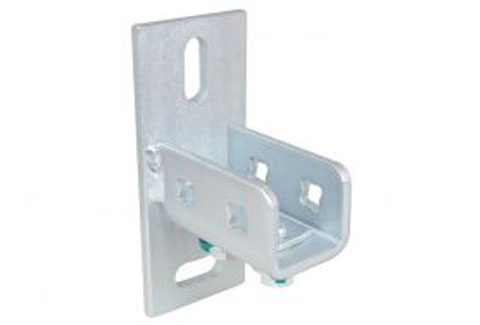The metal products manufactured by Walraven have surface treatments with an anti-corrosion process to give them long-term optimum protection against adverse environmental effects.
There are several different types of surface treatment which offer different levels of corrosion protection:
The Walraven BIS UltraProtect® 1000 system is the ideal and most durable solution for securing or supporting mechanical installations, solar systems and many other types of installations.
The Walraven BIS UltraProtect® 1000 products have a very high corrosion resistance. They effortlessly withstand a salt spray test of at least 1000 hours* (in accordance with ISO 9227). The salt spray test shows that the corrosion resistance of Walraven BIS UltraProtect® 1000 products is higher than, for example, hot dip galvanised products (approximately 300-600 hours).
Although the system utilises a relatively thin protective coating, the corrosion resistance is high. Not only does the Walraven BIS UltraProtect® 1000 surface protection offer a smooth finish, the products are also visually appealing. Our products with Walraven BIS UltraProtect® 1000, including threaded items such as bolts, nuts and threaded rods, have superior corrosion resistance**.
The products to be treated are cleaned, degreased and pickled. The protective coating is then applied in an electrolytic process. The thickness of the layer of zinc is between 1 and 20 μm (0,001 – 0,020 mm) and is determined by the current intensity and the duration of the galvanizing process. After the galvanizing process, the products are passivated to extend the protection period.
Also known as Sendzimir galvanization. Pre-galvanizing is a continuous thermal galvanizing process. The strip steel is guided through a bath containing liquid zinc after being cleaned, degreased and pickled. Later, the steel is cut to the required width. The sides of this cut material are not galvanized. This is also the case with any holes drilled in the pre-galvanized material.
The sides of material thinner than 1,5 mm are somewhat protected by the zinc layer on the top and bottom by the ‘pulling together’ electrolytic process.
This method is excellently suited for products with a screw thread, which can be used indoors or in a non-corrosive environment.
Also known as ‘thermal galvanizing’, ‘full bath galvanizing’ or ‘centrifugal galvanizing’. The products to be treated are cleaned, degreased, pickled and subsequently put into an immersion bath of liquid zinc. The immersion bath has a temperature of 550 °C. In this process, an alloy of zinc/iron develops on the surface and is then covered by a pure zinc layer.
The thickness of the zinc layer varies between 50 and 150 μm (0.050 – 0.150 mm). As a result, the process is less suitable for products with threaded holes or rods. Hot dip galvanized products are ideal for indoor and outdoor use and damp and light-corrosive environments.
Delta-Tone 9000 consists of zinc and aluminium particles held together by an inorganic binder. This offers adequate protection against corrosion even with a limited coating thickness.
Delta-Tone 9000 is applied in an immersion/centrifugal or spray process and then dried at 200 °C. This method forms an even layer over the whole product with a thickness of 10 – 12 μm. Subsequently, Delta-Tone 9000 forms a connection with the metal underneath.
In contrast to electrolytic and thermal galvanizing, with Delta-Tone 9000, there is no danger of hydrogen embrittlement in materials with an increased carbon content, such as spring steel.
To improve the corrosion resistance, the process can be repeated, increasing the thickness each time by 10 – 12 μm. Products protected by Delta-Tone 9000 are suitable for
outdoor use, as well as moderate corrosive environments.
Download our PDF to read a summary of our different surface treatments.
Surface treatments data sheet* Until the occurrence of a maximum of 5% red rust and with a layer thickness of 50 – 80 μm.
** Read our warranty conditions